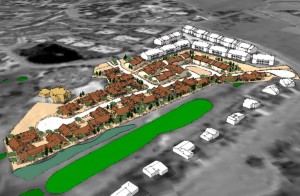
Recently, I faced an issue that I see becoming a common issue as the golf industry continues to decline and the costs and availability of water continues to decrease. That issue is what to do with the excess number of golf courses that our country accumulated from the 1970’s through the 1990’s. My previous employer was hired to determine the feasibility of the golf course and what alternatives are available for the course. We generated concepts to modify the course to a nine-hole course, a par 3 executive course and one option to eliminate the course in its entirety. All of these alternatives were obviously very controversial in a community constructed as a “golf course community.” I see this issue becoming a widespread problem as more courses become out-of-date and more valuable as infill greenfield land. The problem is that the courses that were built in the 1970’s had infrastructure that now, forty years later, has become defunct. Replacement supplies for this infrastructure no longer exist. The cost to replace an irrigation system for a golf course in its entirety can be in excess of $1 million.
For the particular project that I was involved with, we came up with a solution that we felt was not only in the best interest of the golf course property owner, but also the surrounding residents who had fears of losing their golf course. The solution was to utilize the driving range, which was eroded without irrigation, and develop enough patio homes to leverage financing for a new irrigation system for the remainder of the course. As in all controversial projects, the entitlement process still involved opponents to the re-zoning action necessary. Through many public meetings and individual meetings with neighborhood opponents, we were able to come to a consensus with the majority of the homeowners.










